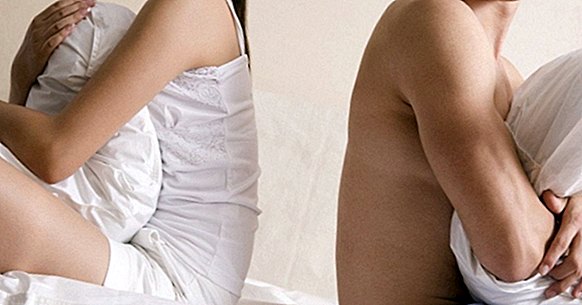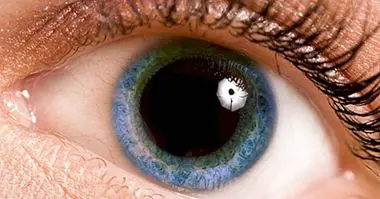Malaxophobia (fear of love games): symptoms, causes and treatment
One of the characteristics of specific phobias is that they can appear in any area of the person's life, so sexuality is not exempt from them either. The dynamics of seduction and intimate games can be very invigorating if they are known to take place.
However, the ambiguity that is usually characteristic of some of these situations, together with negative experiences and a lack of social skills, can be the perfect growing field for the appearance of certain anxiety disorders such as malaxophobia .
- Related article: "Types of phobias: exploring the disorders of fear"
What is malaxophobia?
Malaxophobia is a specific anxiety disorder in which the person experiences a deep fear towards the conducts related to the seduction or the loving games .
While it is true that some people feel uncomfortable with this type of situations or dynamics of an intimate nature, so that the feeling of anguish can be categorized as a phobia the fear that is experienced must be completely irrational, exaggerated and constant throughout the time and situations.
Therefore, in cases of malaxophobia the person feels completely incapable of carrying out any behavior, as well as submerging is any type of situation that implies having to face behaviors that have the purpose of initiating or maintaining an intimate or sentimental relationship with another person.
However, fortunately for the people who suffer from it, the symptoms of this mental alteration can diminish its intensity notably and even remit completely thanks to the psychological interventions specifically created for this type of anxiety disorders.
- Maybe you're interested: "Assertiveness to seduce: 9 tricks to improve your communication"
What symptoms appear?
Since malaxophobia is part of the disorders known as specific phobias , shares a large number of symptoms with them. The clinical picture of this anxious disorder usually appears in situations in which the person suffering from it must face or carry out activities or behaviors related to the game of love and seduction.
When this happens the person experiences a lot of symptoms of an excessive anxiety response. Although these indications of the presence of a phobia can vary both in quantity and intensity among the people who suffer from it, as a general rule and for fear to be considered as phobic, a series of physical and cognitive symptoms must appear. and behavioral
1. Physical symptoms
The physical symptoms can appear at the same moment in which the person must face the feared situation or, on the contrary, in response to anticipatory fear . That is, before the situation occurs or just thinking that at some point it may happen.
These physical symptoms consist of a series of alterations and completely uncontrollable physical changes that the person experiences in response to the appearance of the phobic stimulus. The origin of these organic alterations is due to hyperactivity of the central nervous system and can be manifested in the following ways:
- Increase in the cardiac rate .
- Increase in the respiratory rate.
- Feeling of suffocation or shortness of breath.
- Muscle tension .
- Headaches
- Gastric alterations.
- Increased levels of sweating .
- Feeling of vertigo or dizziness.
- Nausea and / or vomiting
- Fainting or loss of consciousness .
- Feeling of unreality or depersonalization.
2. Cognitive symptoms
The experimentation of the physical or organic symptoms is conditioned to a series of cognitive symptoms that appear in advance and that consist of a series of irrational ideas and beliefs about the feared situation. In the case of malaxophobia, these ideas are related to intimate love games and behaviors related to seduction.
These thoughts are often related to an excessive fear of feeling humiliated, rejected or embarrassed by the other person. Among the cognitive symptoms of this phobia are:
- Distorted beliefs about the supposed dangers of seduction and love games.
- Intrusive and uncontrollable ideas related to these situations.
- Obsessive speculations about the possible consequences of these acts.
- Intrusive images and catastrophic nature.
- Fear of losing control and not being able to manage the situation satisfactorily.
3. Behavioral symptoms
As a consequence of the symptoms described above, the person also experiences a series of symptoms or behavioral patterns that appear in response to the appearance of the dreaded situation.
The objective of this behavioral symptomatology is to avoid this situation or to flee from it in case it has not been able to avoid it. In this way, the experimentation of the feelings of anxiety and anguish will also be avoided.
These behaviors refer to the avoidance and escape behaviors . In the first case, the avoidance behaviors refer to all those behaviors or acts that the person performs to avoid the possibility of having to face these situations. On the other hand, escape behaviors appear when the person suffering from malaxophobia is already submerged in the feared situation. During this period of time, the person will perform all kinds of acts or behaviors that allow him to escape from the situation as quickly as possible.
What causes does it have?
Although at the moment can not reliably determine the specific causes of a phobia. The evidences point towards the possibility of experiencing highly traumatic events or experiences or with a great emotional burden, together with a genetic predisposition to the harmful effects of stress, establish a basis for the appearance of the phobia.
For example, a person whose genetics constitutes a risk factor and who has suffered some rejection or humiliation while in an intimate situation, is susceptible to developing malaxophobia.
However, we must take into account other factors such as personality, cognitive styles or learning by imitation , that can favor the appearance and development of irrational fear to any type of object or situation.
Is there a treatment?
Malaxophobia, although strange, is a highly disabling disorder for the person who suffers it, which is completely incapable of initiating and maintaining any kind of intimate interaction with another person.
This fear can be highly frustrating, since the person who suffers it feel the need and desire to be with another person , but at the same time the fear of having to face this situation. So it makes this completely impossible.
Fortunately, treatments have been developed to reduce this anguish and even eliminate it completely. The intervention through psychotherapy has turned out to be highly effective in the treatment of phobias.
Through a treatment that combines a cognitive restructuring to eliminate psychological symptoms, together with systematic desensitization techniques or live exposure, as well as a training in relaxation techniques can help the person to overcome his phobic fear and rebuild his life in a normal way



















